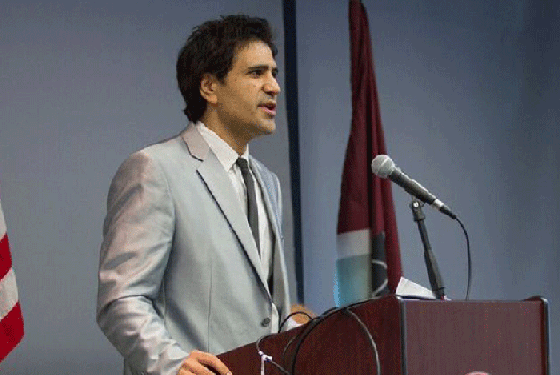By Dr. Majid Rafizadeh
Iran’s economy is in a much worse situation than international financial institutions predicted just a few weeks ago. The International Monetary Fund (IMF) reportedin April that inflation could reach 40 percent, while the World Bank indicated in June that Tehran’s gross domestic product (GDP) would shrink4.5 percent this year. That was 0.9 percent worse than its prediction in January. But, thanks to data releasedby the Statistical Center of Iran last week, the picture appears even gloomier.
Among the parameters through which a healthy economy can be measured are its rate of inflation and the price of commodities compared to average salary. According to the Statistical Center of Iran, consumer inflation has reached almost 50 percent — some 10 percent higher than the IMF predicted and 25 times higher than the inflation rate in an efficient economy. Generally, an acceptable inflation rate is about 2 percent.
The astronomical increase in inflation has affected consumer prices in Iran, which have increasedby nearly 60 percent year on year in rural areas. In some sectors, priceshave gone up by nearly 100 percent. For example, the cost of basic foods such as fruit, vegetables and meat have increased more than other commodities. In July, the price of meat had risen by 95 percent in comparison to last year.
In order to better understand how this inflation is actually affecting ordinary people, the average salary and employment rate should be examined.
The average monthly salaryin Iran is about 25 million rials ($200). But it is important to point out that the unemploymentrate has been in the double digits for the last decade. Although Iran has an educated youth population, which constitutesmore than 60 percent of the entire population, more than 30 percent of them cannot find jobs. Also, more than 40 percent of the population, which is approximately 32 million citizens, live below the poverty line.
But, even if we consider those who are fortunate enough to be employed, the overwhelming majority of the population is still struggling to make ends meet. The average rent in urban areas often exceedsthe salaries of many full-time workers, let alone other basic necessities such as food, medicine, transportation, school fees, etc. For example, Darioush, a full-time teacher who has been working in public schools in Tehran for more than 11 years, said: “The average teacher’s salary is around 12 million rials a month. The rent for a one-bedroom apartment in the suburbs of Tehran is about 20 million rials a month. A typical doctor visit will cost you about 1.1 million rials (approximately 10 percent of the salary).”
There are several reasons for Iran’s high inflation. One is the renewed US sanctions on Iran, which are part of Washington’s policy of imposing maximum pressure on the country. After US President Donald Trump last year withdrew from the Joint Comprehensive Plan of Action, also known as the Iran nuclear deal, the US Treasury Department reimposed the primary and secondary sanctions that were lifted under the Obama administration. These include sanctions on Iran’s automotive and shipping sectors, the energy industry, and currency transactions.
But the Iranian regime has been most hurt by the sanctions leveled on its oil sector, with the US’ stated objective being to drive Iran’s oil exports to zero. Iran’s oil revenues and exports have been steadily falling as a result. Before the US took a tougher stance toward the Iranian regime, it was exportingmore than 2.5 million barrels per day (bpd). In June, however, Iran’s oil exports had dropped to approximately 300,000 bpd — a decline of more than 80 percent.
The overwhelming majority of the population is still struggling to make ends meet.
Dr. Majid Rafizadeh
It is worth noting that Iran’s high inflation and crumbling economy has not only been caused by US sanctions, as some policy analysts, scholars and politicians may suggest. The underlying factors are ingrained in Tehran’s political and financial institutions, which are the country’s backbone. In other words, the widespread corruption within the theocratic establishment and across the political spectrum; the mismanagement of the economy by the leadership; embezzlement and money laundering within the banking system; and the hemorrhaging of the nation’s wealth on militias, terror groups and proxies across the region are the major factors contributing to the crisis.
To be more specific, Iran’s Islamic Revolutionary Guard Corps (IRGC) and its affiliates, the Office of the Supreme Leader, and the regime’s cronies are also responsible as they control considerable parts of the economy and financial systems. The IRGCalone controls more than half of Iran’s GDP and owns several major economic powerhouses and religious endowments, such as Astan Qods Razavi in the northeastern city of Mashhad.
The high rate of inflation is ravaging Iran’s economy and hurting the ordinary people. But there is no one to blame other than the Iranian leaders for their widespread corruption, mismanagement of the economy, and expenditure on terror and militia groups across the region.

- Dr. Majid Rafizadeh is a Harvard-educated Iranian-American political scientist. He is a leading expert on Iran and US foreign policy, a businessman and president of the International American Council. Twitter: @Dr_Rafizadeh
This article was first published by arabnews





Comments
Post a Comment